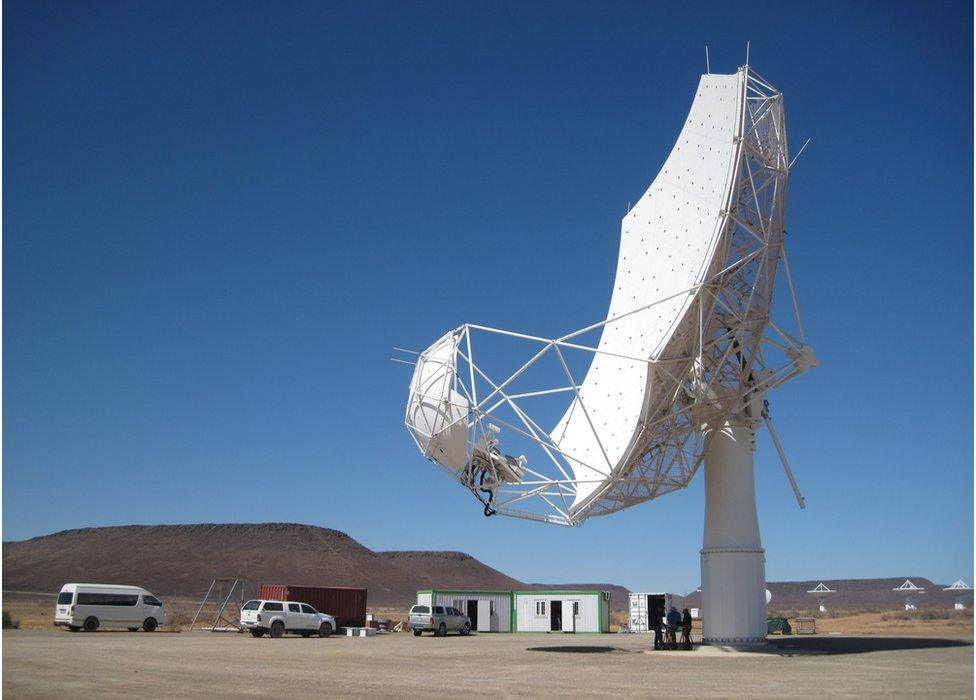SKA: Work beginning on the world's biggest telescope
- Published
- comments

This is what the SKA could like when it's completely finished
If you've ever dreamed of seeing the stars up close then, then that dream is about to become a step closer.
Construction has begun on a massive telescope called the Square Kilometre Array (SKA), which will be the largest radio telescope in the world when it is completed.
Split across South Africa and Australia, with a headquarters in the UK, more than 100,000 antennas will be built as part of the project, which involves 16 countries.
Combined, the two sites will create one of the biggest science facilities on Earth.
Some of the antennae in Australia are already set up
The $3 billion construction is likely to take six years to build, and is expected to be completed in 2028.
As a first step, the site in Australia will work alongside a project in South Africa that has 197 satellite dishes.
The first major milestone should come in 2024, when four dishes in Australia and six antenna stations in South Africa are made to work perfectly together as a basic telescope.
The hope is it will answer some of the biggest mysteries in space science, and provide answers to some of mankind's oldest questions about our universe.
The idea of building a massive telescope to help us gain a greater understanding of the universe came about in the early 90s, and by 2003 the SKA project had begun.
The telescope is being built in areas already used for radio astronomy
Prof Phil Diamond, director general of the Square Kilometre Array Organisation said it had taken a long time to get the project to this stage.
"It's been a 30-year journey. The first 10 years were about developing the concepts and ideas. The second 10 was spent doing the technology development.
"And then the last decade was about detailed design, securing the sites, getting governments to agree to set up a treaty organisation (SKAO) and provide the funds to start."
The technology means the telescope should be able to detect very faint radio signals coming billions of light-years from Earth, including those signals emitted in the first few hundred million years after the Big Bang.
- Published28 December 2021
